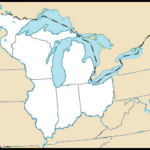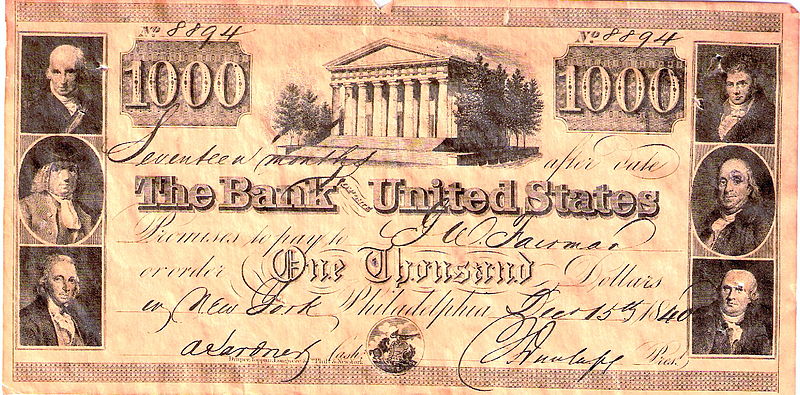The focus of this blog post will be for you to practice the skill of identifying changes and continuities throughout APUSH with one theme in mind: immigration.
We know that getting all the details about what happened when in U.S. history (let alone explaining the significance of those events) can be hard. That’s why we have created this series of posts, “Themes Across APUSH,” that gives you a brief overview of one theme at a time, along with tips to help you think about patterns of change and continuity. Ready to dive in? Let’s go!
A Brief History of Immigration in the United States
If you’ve been paying even a little bit of attention to recent news, you will have seen the current debates about immigration in the United States.
“The United States is a nation of immigrants,” these politicians and pundits will declare. But what does that even mean?
This blog post will explore the theme of immigration for the APUSH test by outlining the following events:
- The Naturalization Act of 1790
- The official end of the slave trade in the United States in 1808
- Mass Immigration of the mid-1800s
- The Transcontinental Railroad and the Chinese Exclusion Act of 1882
- The settlement house movement and progressivism
- The Spanish American War
- The Dillingham Commission
We have a lot of ground to cover, so as you continue reading, I want you to be thinking about what has changed in U.S. immigration policy, and what has continued.
I also want you to be thinking about what I have left out of this post. For example, this overview will stop in 1907; a lot of immigration stories have happened since then! How would you incorporate those events into this story about immigration in U.S. history? Furthermore, I am separating immigration from migration; therefore, I am not including forced movements of indigenous people further West. (For that, you should check out my post on the Indian Removal Act, as well as explorations of the themes of Imperialism and Expansion in this series.) You should ask yourself questions like: should the forced and violent movement of indigenous peoples be a part of the immigration theme? Why or why not?
In short, as you are reading this post, you should be doing a lot of thinking, too!
APUSH Themes: Immigration
1. The Naturalization Act of 1790
For purposes of a blog post about immigration, it is important that you understand what naturalization means. Here’s a quick definition:
Naturalization (noun): the process by which a non-citizen of a country becomes a legal citizen of that country
With that definition in mind, it becomes clear that the Naturalization Act of 1790 was meant to determine who could become a citizen. According to the following passage (which is an excerpt from the Act), who could become a citizen in 1790?
- Be it enacted by the Senate and House of Representatives of the United States of America, in Congress assembled, That any Alien being a free white person, who shall have resided within the limits and under the jurisdiction of the United States for the term of two years, may be admitted to become a citizen thereof on application to any common law Court of record in any one of the States wherein he shall have resided for the term of one year at least, and making proof to the satisfaction of such Court that he is a person of good character…
Source: Naturalization Act of 1790
The legal language can be a little hard to follow, but the idea is that only a “free white” man of “good character” can become a citizen, provided that he has lived in the United States for two years. However, as we well know, more than just white men were immigrating to the United States. Therefore, all women and non-white (non-white, of course, was a very loose definition) men were considered noncitizens.
2. End of Slave Trade in 1808
One of the biggest forms of immigration was forced; that is, the movement of Africans to the Western Hemisphere for the purposes of enslavement.
Of course, slavery continued within the United States until 1865, and the internal slave trade continued long after 1808. Any full exploration of immigration in the United States has to account for the fact that immigration occurred on a spectrum from violent and forced to peaceful and non-coercive. Another example of the paradox of immigration black Americans faced would be The Great Migration.
3. Mass Immigration of the mid-1800s
In the early to middle part of the 19th century, the United States saw a decisive uptick in immigrants from the following places:
- Germany. Because of crop failures and the consequences of rapid industrialization, many German individuals sought out opportunities in the United States.
- Ireland. The infamous Irish Potato Famine drove immigrants to the United States in droves.
- Mexico. As a result of the Mexican-American War, Mexicans living in Texas, California, and other areas in the southwest became citizens through the Treaty of Guadalupe Hidalgo; however, the influx of Mexicans into the United States was not necessarily the result of individual movement, but rather, the movement of national boundaries.
4. The Transcontinental Railroad and the Chinese Exclusion Act of 1882
Chinese workers immigrated to the United States in order to complete the Transcontinental Railroad. The Chinese Exclusion Act was an outgrowth of their presence in the United States; however, individuals had mixed feelings about this exclusion.
See the political cartoon from Thomas Nast as an example of one point of view about the exclusion of Chinese immigrants. What is his view on these immigrants? How is he making his point?
5. The settlement house movement and progressivism
As a result of rapid industrialization in the Northeast and Midwest of the United States, many individuals from all over the world immigrated to the United States for economic opportunities. They were not always welcomed in cities, however.
Progressive Era reformers (that is, individuals who wanted to ameliorate society from the excesses of the Gilded Age) began what came to be known as the settlement house movement in order to assist new immigrants in their process of assimilation to the United States.
One of the most famous of these progressives was Jane Addams, who published detailed maps about the neighborhoods she lived in and the immigrants she met there.
5. The Spanish American War of 1898
I am highlighting the Spanish American War as an important piece of the immigration story because it is often left out. One of the implications of this war was that the United States “won” the Philippines, Puerto Rico, and Guam from the Spanish empire. The Philippines would be recognized as an independent nation after World War II, but Puerto Rico and Guam remain territories of the United States and the individuals who are born on these two islands are citizens.
6. The Dillingham Commission of 1907
The Dillingham Commission was formed in 1907 when U.S. lawmakers were concerned about increased immigration from southern and eastern Europe. The work of this commission would have the following consequences:
- Providing the justification for restrictive immigration policies through the 1920s, including the Emergency Quota Act of 1921
- Lead to the eventual National Origins Formula of 1929
How Should I Make Sense of all this History?
While this was an overview, there are lots of ways to think about change and continuity based on these events. The following is a list to get you started:
1. The changing definition of what it meant to be a U.S. citizen;
2. The spectrum of causes motivating immigration; and
3. Reactions to immigrants from within the United States.
I am sure that you can think of many more ways to make sense of this important theme for APUSH. Check out the additional resources below for more ideas. Happy studying!
Videos
Historian Nell Irvin Painter on race and immigration
Podcasts
The Melting Pot: Listen as several historians debate the meaning of assimilation at various points in U.S. history.





Leave a Reply